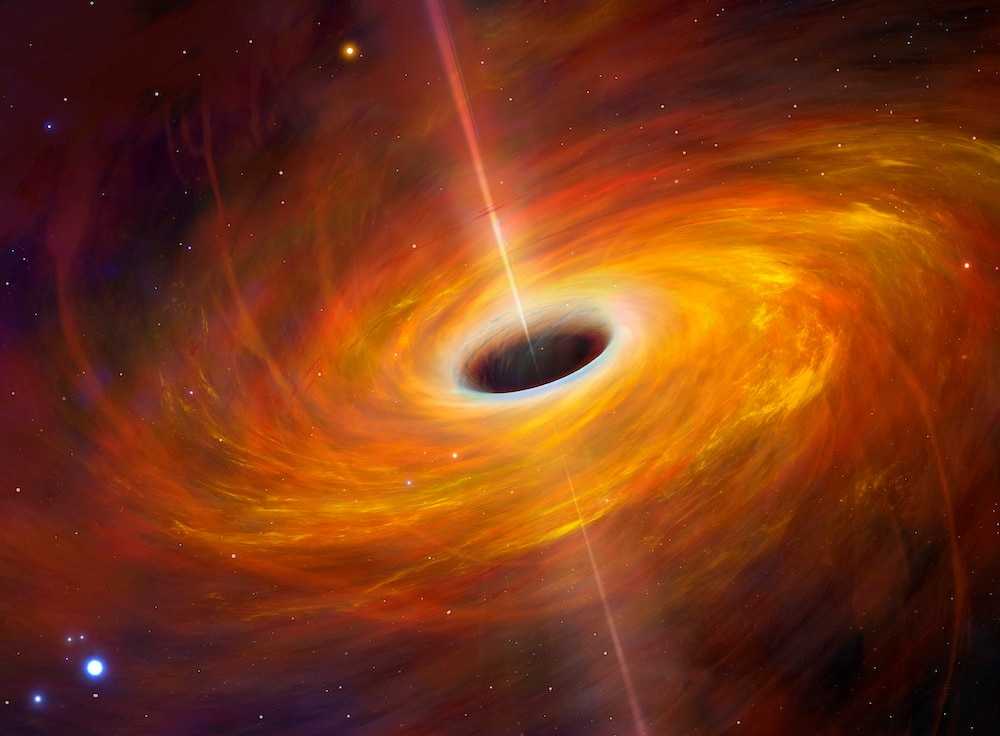Create a free profile to get unlimited access to exclusive videos, sweepstakes, and more!
Our black hole won't stop acting up and throwing tantrums
The black hole in the center of our galaxy doesn’t just flare — it makes a scene.

The supermassive black hole that lurks in the center of our galaxy is also the center of attention. It doesn’t just flare — it makes a scene.
What is especially weird about the behavior of Sag A* is how erratic it gets. While all black holes flare, especially when eating, our black hole randomly breaks out into monster flashes 10 to 100 times brighter than your average flare. It emits powerful radiation in the form of radio, X-rays, and gamma rays, which manage to escape from a shroud of gas and dust that makes it nearly impossible for visible light to make it through. But what is making Sag A* act up?
This question is why astronomer Jakob van den Eijnden of the University of Oxford, along with his research team, investigated 15 years’ worth of data that NASA’s Swift Observatory had gathered while orbiting Earth and seeking gamma rays. Swift has been up there’s since 2006. It saw Sag A* being especially unruly between 2006 and 2008, then calming down for four years before it started with the megaflares again. There was seemingly no pattern. Recently, van den Eijnden coauthored a study that was published in Monthly Notices of the Royal Astronomical Society.
“These flares tend to happen, on average, once a day, but the challenge is to actually see them,” he told SYFY WIRE. “We cannot predict when they will occur, and we cannot point a telescope at Sgr A* without any breaks. As a result, we miss most flares.”
Flares are actually moments during which the gas spiraling in a black hole’s accretion disc, helplessly falling in towards the black hole, blazes with brightness. You can’t actually see anything coming from the black hole itself because no light can escape beyond the event horizon. Then there are other obstacles to observing flares, such as the Sun, Moon, or (most often) Earth getting in the way of the space telescope. It doesn’t help that flares don’t last long. They don’t usually go on for more than an hour, even though brightness levels are astronomical.
It is possible that Sag A* just wasn’t getting enough to eat during those more quiescent years. Black hole activity tends to spike when stars or gaseous clouds of star stuff venture too close and are pulled in by the beast’s rain gravitational appetite. However, there is no proof that this is what causes the erratic behavior. It could be that properties (especially magnetic properties) in the surrounding gas aggravate Sag A*. The magnetic fields of supermassive black holes can be as intense as their gravity, and can sometimes make a black hole spew out huge jets of material.
“I think it is possible is that flares happen due to gas that falls into the black hole,” said van den Eijnden. “These models suggest that very magnetic blobs can form in this gas, and could be able to emit the extra light, so each flare may be caused by one of these blobs forming and falling towards the black hole.”
When searching through Swift data for an answer, the astronomers assumed that they might see a flare overpowering the regular emissions of Sag A*. They wanted to measure how often emissions appeared faint and how often they showed up as bright flashes. It is not always possible to catch the peak of a flare when objects end up blocking it. However, this method still allowed van den Eijnden to pick up on residual light from a superflare. Though these may appear faint from here, they sometimes rage brightly enough to be obvious from this far away.
The temper of Sag A* raged more in the first two and final three years of data spanning from 2006 to 2019. Fewer superflares happened in between. It remains unknown whether this pattern, or lack thereof, keeps repeating itself or just happened by chance. The amount of time our black hole was observed is nothing in cosmic terms. What makes this mystery even more complicated is that supeflares are rarely observed, and whether Swift catches sight of them or not could be down to chance. Despite data and simulations, there is no evidence for cause.
“I find it hard to imagine that another X-ray telescope in the future will obtain a similar dataset, so we should continue with this long-term project,” said van den Eijnden. “With more years of data, we can further search for changes in the flares.”














